It’s the most wonderful time of the year–especially if you’re in eCommerce. But don’t expect to wrap up the holidays without sprucing up your website. Instead, follow these steps to improve your seasonal eCommerce strategy.
Why Seasonal eCommerce is Important
It’s no secret that eCommerce websites get much more traffic on Black Friday and Cyber Monday. However, that doesn’t mean that you’re off the hook. Check out the Criteo seasonal shopping data from 2018, shown below.
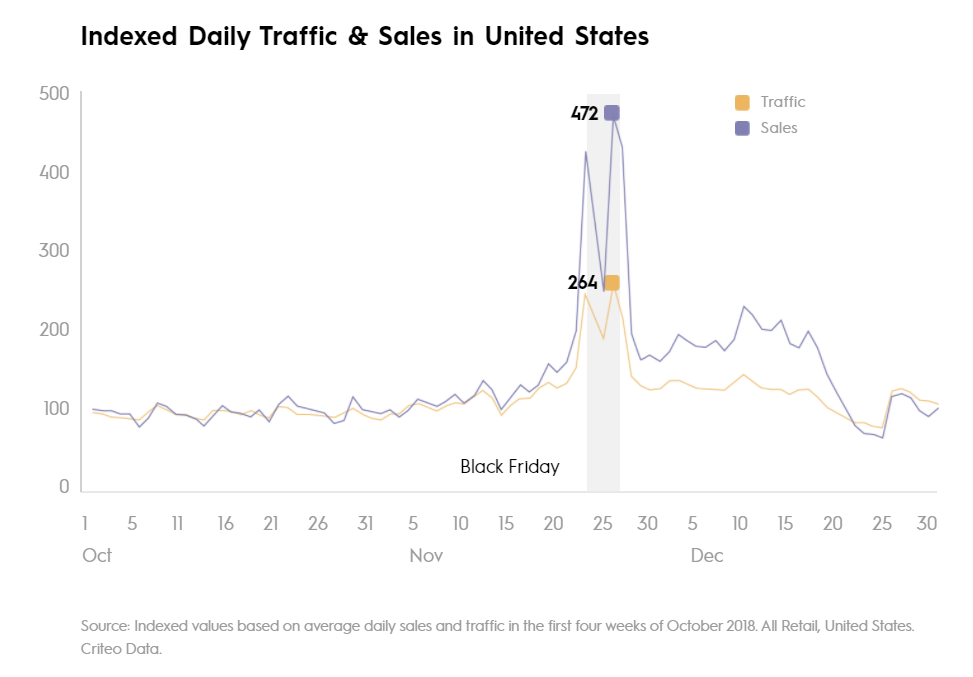
While Black Friday results in a huge spike of traffic, it doesn’t stop there. Notice that both traffic and sales remain much higher than average for the rest of the year. More importantly, sales conversions are super high all the way until December 25.
And it’s not just December you need to think about. Depending upon your business, certain times of year will have higher conversion rates than others. For each upwell, a little bit of extra work will go a long way. By simply sprucing up your website, you will see much higher sales–no matter the season. Here are some great starting places.
Designing for Seasonal eCommerce
You may be prepared for the holidays, but do you show it? Your website should.
By branding your website with festive graphics, people will associate those warm and friendly holiday feelings with your brand. It’s also a great way to get people in the buying mood. Here are three ways to change up your web design for the holidays.
Festive themes
It’s always a good idea to go all-out for the holidays.
Explore how your website would look with a holiday theme. Most of the time, you won’t have to change much. Just swap out some images and change the copy and you’ll be set. Best Buy, for instance, keeps things sweet and simple.
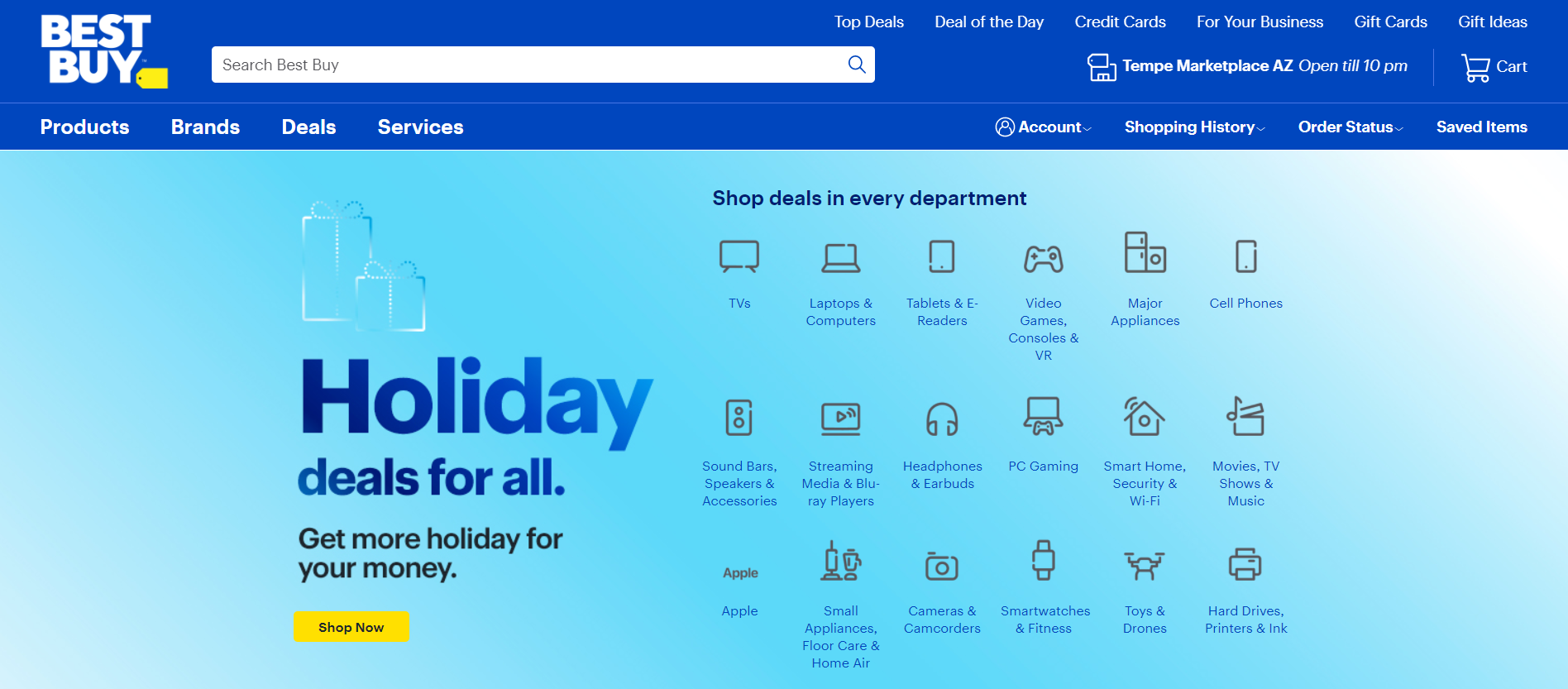
By making the text more festive and adding some gift graphics, Best Buy immediately seems more festive. Many other retail websites do the same thing. Macy’s also replaced images–and it looks great!

Also, note that the Macy’s website has a small banner at the top. Banners like that one are a great way to promote sales, coupons, and discounts without annoying pop-up windows. We’ll talk about that banner more in just a bit.
Overall, it’s not very hard to make your website look more festive for the holidays. A little bit of work will go a long way.
Test Responsiveness
If you change anything for the holidays, make sure it works well on mobile, too. Did you add a fun new animation? Check that it doesn’t break the mobile website. If you don’t have a mobile website, that’s an even bigger problem. In fact, almost 40% of all holiday purchases last year were made on mobile devices. Make sure your new holiday designs look as good on mobile as they do on desktop computers.
Holiday logo
Everyone knows about Google’s famous holiday doodles.

The Zamboni doodle even lets you play a game!
However, Google doesn’t have to be the only festive company out there. With just a little effort, your logo can fit the mood–even if you just slap a Santa hat on it and call it a day. Festive logos make your website and promotional emails feel more in-line with the holiday spirit. Plus, they help the user to associate those positive holiday feelings with your brand.
SEO for Seasonal eCommerce
What’s the point of decking out your website if you don’t get more visitors?
To truly prepare for the holidays, you need to attract as many new visitors as possible. Here’s how to improve your SEO for the holidays.
No Annoying Popups
Let’s start by going over what not to do. Don’t use annoying popups! We’re serious.
But not all popups are annoying, right? Guess again. Even if you offer the customer 90% off their purchase, you still run the risk of scaring them away. And if the customer leaves as soon as you throw a popup at them, your bounce rate will skyrocket.
Besides, there are better options. Try using a banner instead. This strategy works best when you need to promote shipping deals. Home Depot, for instance, combines a “Free 2-Day Delivery” banner with festive promotions–and it looks great.
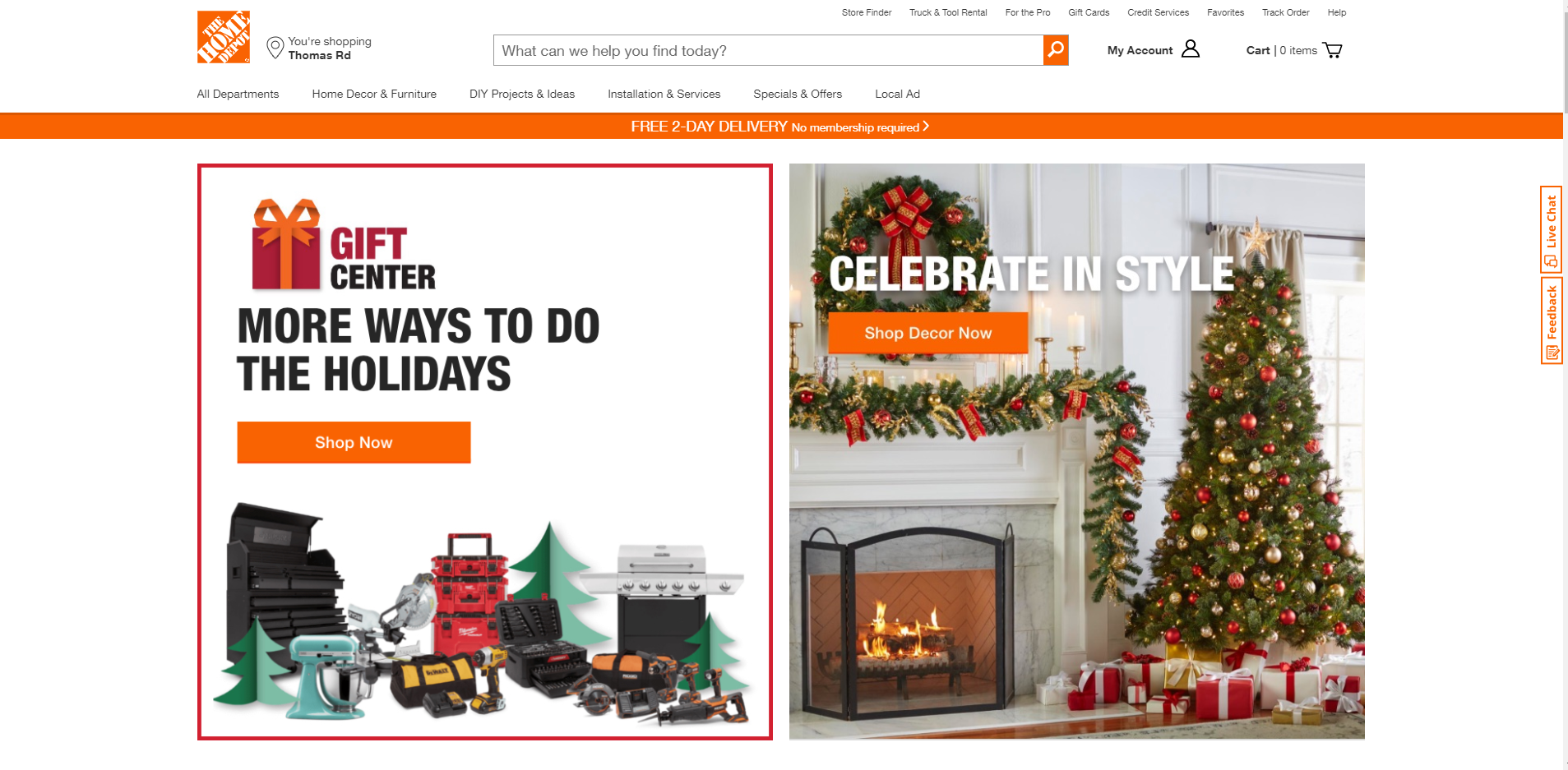
There’s a reason both the Home Depot and Macy’s websites have a “Free Shipping” banner: it works. But what if you have lots of sales to promote? Try changing your copy. We’ve been over Best Buy and Macy’s, but eBay does it, too.
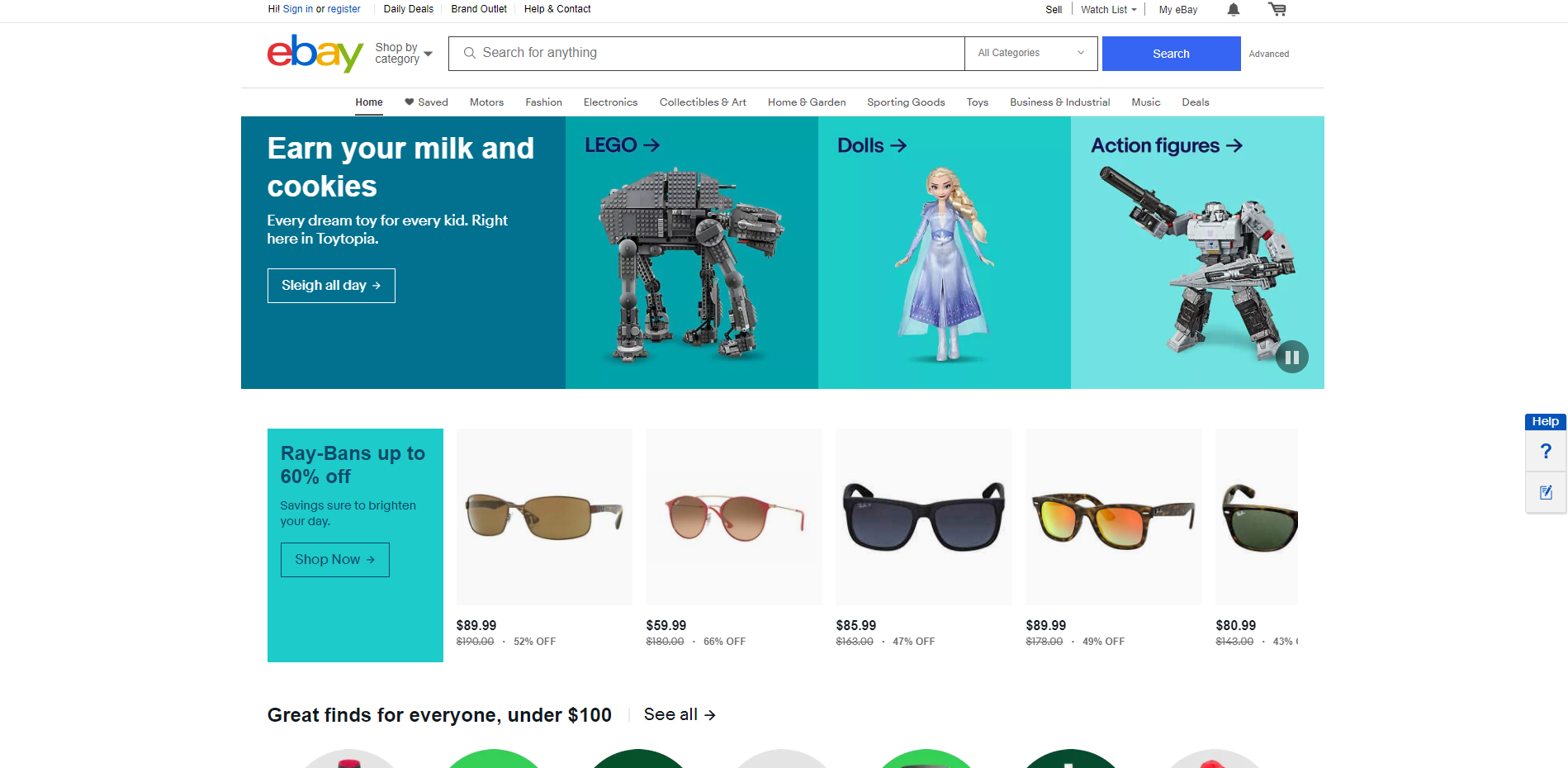
Instead of bombarding the customer with popups, they organically promote sales in the body of the website. These strategies are much more effective than popups because they decrease bounce and don’t make the user feel pushed.
Tags and Keywords
Are you trying to push a certain item for the holidays? Make sure your tags keywords reflect that change.
The best way to get started is to think about what customers will be googling to find the product. For instance, if you sell toys, consider clarifying the age range. Don’t shoot directly for “Christmas gifts”–that’s too vague. Instead, look for keywords that fit both your product and the holiday.
To learn more about holiday keywords, check out this digital doughnut article.
Content
An active blog is great for SEO–as long as the posts are relevant. To stay relevant this season, you must blog about the holidays.
To get started, think about what customers will search for. Don’t know? Try mad-libbing it. Start with “[adjective] Gift Ideas for [target audience]” and roll from there. Of course, all your posts can’t–and shouldn’t–use that formula. However, it’s a good option if you’re stuck.
Deals and Promotions in Seasonal eCommerce
SEO gets people to your website and festive design gets them interested. How do you convert that interest into a purchase?
Try promoting certain products. Whether you give the customers massive discounts or you simply highlight a product on the home page, you should offer the customer plenty of incentive to buy your product. Here are three ways to get started.
Coupons
Coupons are common because they work. When a customer is just too price-sensitive to buy something, a coupon can be enough to nudge them in the right direction. We’ve been over how to promote these coupons, but let’s explore why they are so important during the holidays.
First, let’s say that you normally have 50,000 visitors per month, 1,175 of whom buy something (assuming a conversion rate of 2.35%). As you get closer to Christmas, you will see even more traffic and conversions. Check out this graph from Recart–it really illustrates how big the spike is.
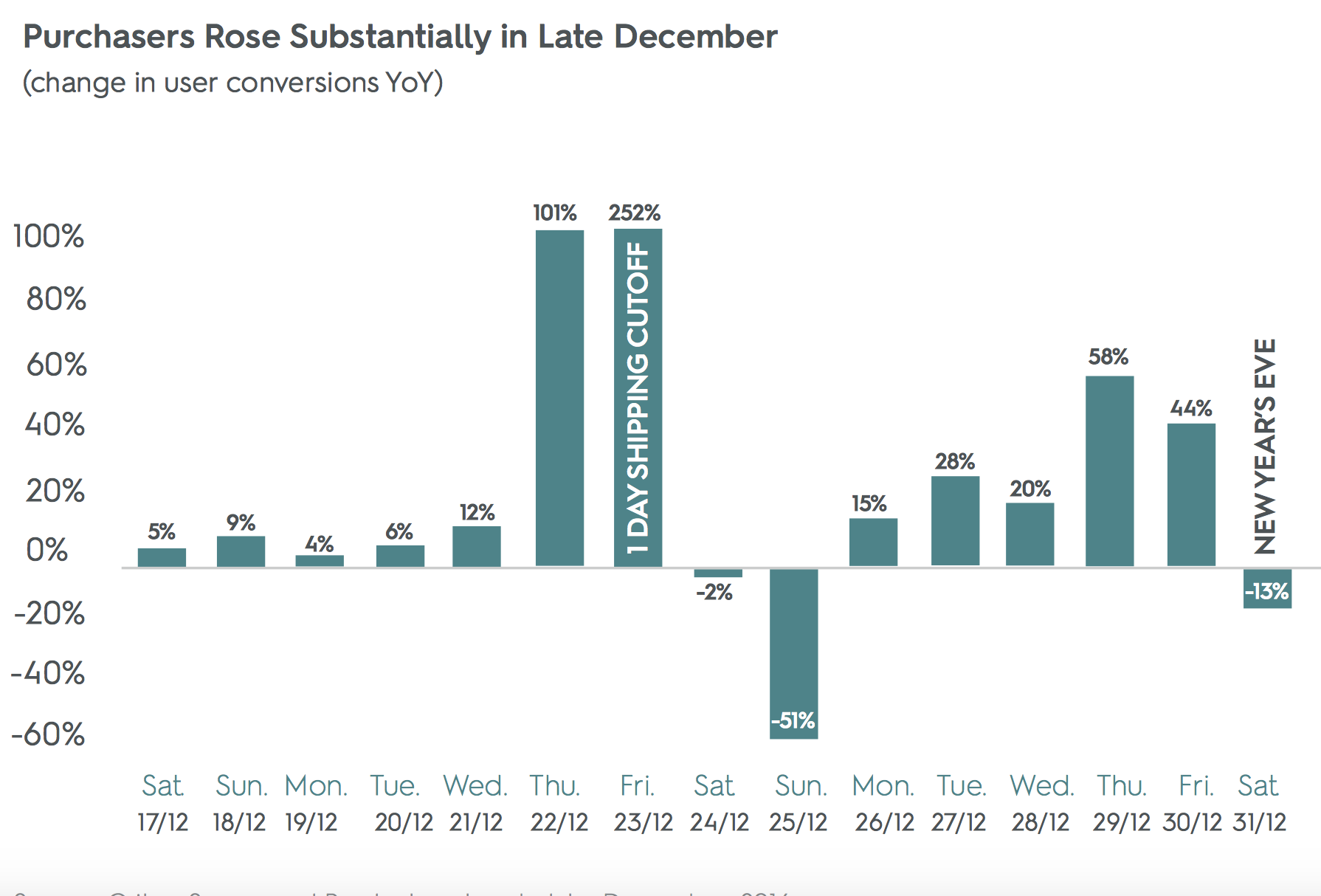
Right off the bat, you’ll have more sales simply because you have more visitors, but you can do better. Since you have so many more visitors during the holidays, a little boost in conversion goes a long way. Coupons and deals add that necessary boost, promising huge returns.
Promotional Emails
Emails are pure gold. If you aren’t getting massive returns, you probably aren’t using them correctly.
They are especially useful for promoting deals. Have a discount you want people to know about? Send them an email! If they come to your website with a goal in mind, they will be much more likely to buy. Even if they don’t read the email, the mere notification puts your company fresh in their minds. You can’t lose–if you strategize correctly.
Shipping Deals
Shoppers don’t plan ahead–so plan for it.
Many of your customers will buy things at the eleventh hour. In fact, last-minute purchases are one of the primary reasons conversion rates are so high on December 23rd. Maybe all you need to do to get people to buy things is to make shipping cheaper. If you offer fast shipping at a low cost, last-minute shoppers won’t abandon their carts as often.
Need to spruce up your website for the holidays? We can help. Reach out online or call us at 888.221.6509.